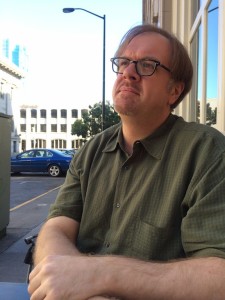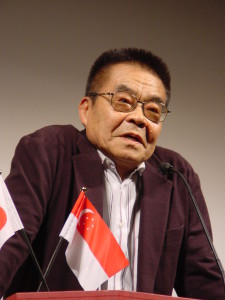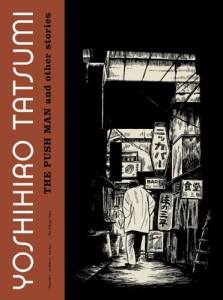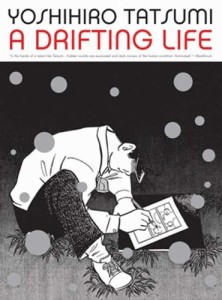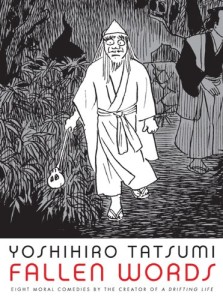(See my “Continuing Series” page for a listing of all posts about using Syd Field’s paradigm to write fiction.)
Last post I explained Syd Field’s “paradigm” and how it applied to writing a three-act screenplay. I also explained that I’ve modified his paradigm for writing fiction (short stories and novels). What I’m about to explain is the first step in that process. It’s to write a treatment for your next story or book.
I’m not talking about a Hollywood treatment. In Hollywood, a treatment is a specific document produced near the beginning of the creative process. Different sources give different definitions, even wildly different page counts, for a treatment. For Syd Field’s purposes, a treatment is a brief description of the screenplay—part sales pitch, part outline, part proof-of-concept—three to five pages long, narrated in present tense with little or no dialogue. It lays out the beginning, middle, and end of the film, not shot-for-shot or in terms of scenes, but in broad summary form. Think of it as an overview of the movie script, whether the script is completed or not. Often a strong treatment is the basis for a movie studio to order the full script’s development. (Sometimes one wishes they were, on average, a bit stronger.)
I am not proposing you write a Hollywood-style treatment for your next novel or short story. I gave it that name because that’s my inspiration for this stage in the process. So, when you see that term here, don’t think of a Hollywood pitch. Think of your treatment as the first step in writing your story.
Writing a treatment for fiction is to prepare for writing a full three-act outline. A treatment challenges you with a series of questions that ask you, in sum, to honestly evaluate where your inspiration stands. It only takes a few minutes, but it makes the next steps even easier.
The fiction writer’s treatment
Let’s start by assuming you have an idea for a story. It might be an inkling, it might be an itch that needs to be scratched. It might be a big, bold idea, one you’ve mapped out in your head from a quiet, unpresupposing opening to a monumental, explosive finish. Maybe you’ve already written some notes. Maybe you’ve written a first page or a first chapter. Maybe you’ve written nothing at all. It could be a novel, it could be a short story, or it could be a dud.
Ask yourself the following questions in order. Use a clean sheet of paper or a fresh word processing document to record your answers; don’t do this in your head. Try to limit yourself to one to two sentences to answer each question. The next steps of this process will give you a chance to expound more. Right now the idea is to shake out that story idea and find its core.
Protagonist: Who is the main character of this story?
In one or two sentences, sum up your idea for the main character. If you don’t have a name for your character, just refer to him or her as “main character” or “protagonist” or “he” or “she”—don’t get hung up on names and ages right now. Don’t write about peripheral characterizing details, use this limited space to really drill down into his or her pertinent information.
Perhaps you have more than one main character in mind. Ask yourself if one of them is, in your mind, the true central character. If not, limit your answer to the bare number of characters central to your story.
Setup: What is the minimum of backstory, history, setting, or exposition that must be presented before the main story begins?
In one or two sentences summarize your main character’s situation when the story opens. It might be where she lives, or place of employment, or why she suffers from some limitation. Brevity is important. Limiting yourself to one or two sentences makes you really think what’s truly important about this character, why this character is important to you, and therefore to the reader.
If you think the answer is “None”—that no backstory must be presented to the reader—great, write that down. However, unless you’re Samuel Beckett reincarnated, most stories require some background or scene-setting before the events of the story begin. Even if it’s the name of the main character and where she lives, that’s backstory.
Inciting Incident: What event disrupts the rhythms and rituals of the main character’s daily life?
The Inciting Incident catalyzes the narration and launches the story. The disruption is usually external or physical, such as the family in Raisin in the Sun receiving a sizable inheritance, but it can be an internal realization or discovery.
Keep your answer to the disruption itself, not your main character’s reaction to it; that’s the next question.
Plot Point #1: What reverses the main character’s daily life such that there is no easy return to normalcy?
Another way to phrase this question is: What happens to prevent the character from simply ignoring the disruption that has occurred? For Raisin in the Sun, the grandmother uses the money as the down on a home in an all-white neighborhood, committing her 1959 African-American family to a precarious future.
Note that it’s possible for the Inciting Incident to be the first plot point. The nature of the disruption could be something impossible for the main character to ignore. (For example, he’s hit by a bus while crossing the street.) But often the inciting incident is not so monumental, even if it seems that way in your mind. Be honest: is there any way for your character to ignore or avoid the inciting incident? If so, you probably need to find a way to ensure there’s no way for her to turn away from it.
There should be no going back. That’s why I emphasize the word “reverses” in the question—there should be some event or decision, internal or external, that alters the trajectory of the main character’s daily life. If they can ignore the disruption and return to life as it was, most characters will. And there your story ends, most likely unsatisfactorily.
No going back
In my experience, the first three questions (Protagonist, Setup, Inciting Incident) answer themselves. When I’m inspired to write a story, I tend to have some idea of the character, their situation, and the event that launches the story proper. Answering those first three questions is largely an exercise in putting my inspiration onto the page, which is valuable in any case.
The fourth question (Plot Point #1) is usually the first challenging one. This is why I emphasize starting with the treatment. It forces you to honestly evaluate your story’s opening and ensure you’re not shortchanging the main character—or the reader.
Too often, underdeveloped fiction assumes that the main character will eagerly jump in to resolve the inciting incident head-on. It also assumes that the reader is along for the ride, that they won’t question why the character has taken on the challenge so willingly. Superheroes leap into action. More human characters look for ways to avoid leaping into action.
Consider Lolita. Confronted by the law and bouncing in and out of sanatoriums, Humbert Humbert resigns himself to moving in with Mrs. Haze, although he abhors her traditional domesticity. All evidence indicates he will simply abandon her and return to his lascivious ways. It’s when he sets his eyes on Haze’s 12 year-old daughter—the Inciting Incident—that Humbert’s “normal” life is turned over. Although he doesn’t want to return to the rhythm and rituals of his previous life, he has little recourse due to Mrs. Haze’s constant presence. Humbert engineers a chance to tussle with the girl—Plot Point #1—igniting his desires that form the remainder of the novel. Plot Point #1 is why there’s no going back for him.
(“Plot Point #1” is Field’s terminology. So far I’ve been unable to find a word or phrase I’m more comfortable with, so I’ve left it in.)
Here’s another example:
After work, a man goes to his girlfriend’s apartment. She announces that she’s pregnant. The man puts his jacket back on, walks downstairs, and hails a taxi. He goes to the airport, where he flies to Europe to put this unexpected event behind him.
This sounds forced to my ear, but the writer developing the story absolutely believed in it. It took the writer some time to realize he was railroading his main character to Rome in order to get to the juicy, intriguing part of the story that he wanted to tell.
My suggestion? Plot Point #1:
After work, a man goes to his girlfriend’s apartment. She announces that she’s pregnant. The man asks his girlfriend to consider terminating the pregnancy, but she’s committed for religious reasons. He walks downstairs and hails a taxi.
I’m not saying this solves every problem with the story, but it firms up the man’s motivation for his abrupt decision to flee. The girlfriend’s announcement is the Inciting Incident and her unwavering commitment is Plot Point #1. It ensures there’s no easy turning back. Otherwise, if your character can simply return to his or her hum-drum life, why wouldn’t they?
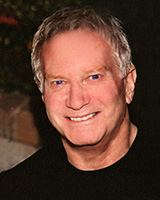
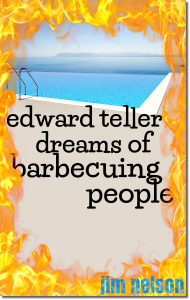

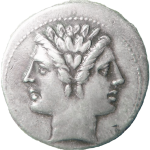 Between reading Field’s description of the midpoint, thinking of some examples in film and fiction, and my own experience, I see the midpoint as a Janus point in the story, a moment of looking backward and forward. Even if the storyline has wandered a bit (due to character development or a digression—any reason, really), the midpoint is a stitch connecting the beginning to the end.
Between reading Field’s description of the midpoint, thinking of some examples in film and fiction, and my own experience, I see the midpoint as a Janus point in the story, a moment of looking backward and forward. Even if the storyline has wandered a bit (due to character development or a digression—any reason, really), the midpoint is a stitch connecting the beginning to the end.
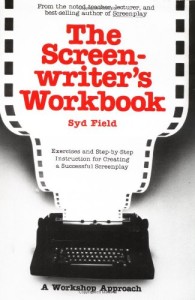 There’s countless guides, how-to’s, manuals, videos, and seminars on successful screenwriting. Syd Field’s Screenplay is, as I understand it, the Bible on the subject. First published in 1979, Field articulated his three-act structure (he calls it “the paradigm”) as a framework for telling a visual story via a series of scenes. Like literary theorists from Aristotle onward, Field recognized that most stories are built from roughly similar narrative architectures, no matter their subject or setting. In Screenplay he set out to diagram that architecture and explain how it applied to film.
There’s countless guides, how-to’s, manuals, videos, and seminars on successful screenwriting. Syd Field’s Screenplay is, as I understand it, the Bible on the subject. First published in 1979, Field articulated his three-act structure (he calls it “the paradigm”) as a framework for telling a visual story via a series of scenes. Like literary theorists from Aristotle onward, Field recognized that most stories are built from roughly similar narrative architectures, no matter their subject or setting. In Screenplay he set out to diagram that architecture and explain how it applied to film.